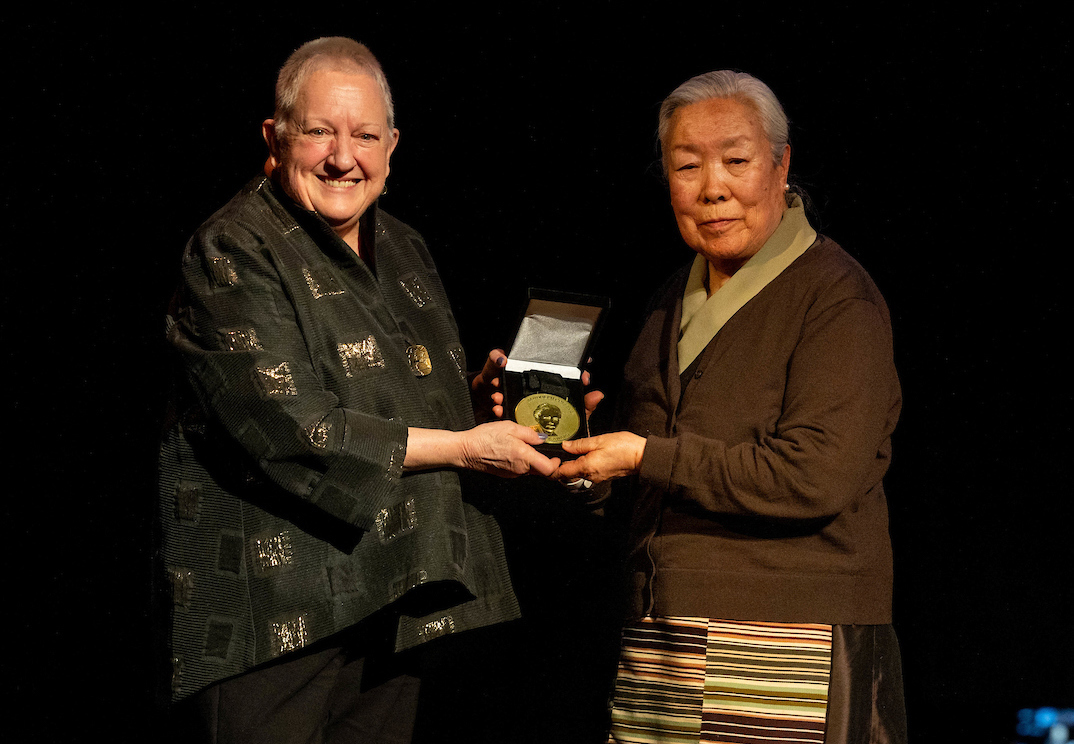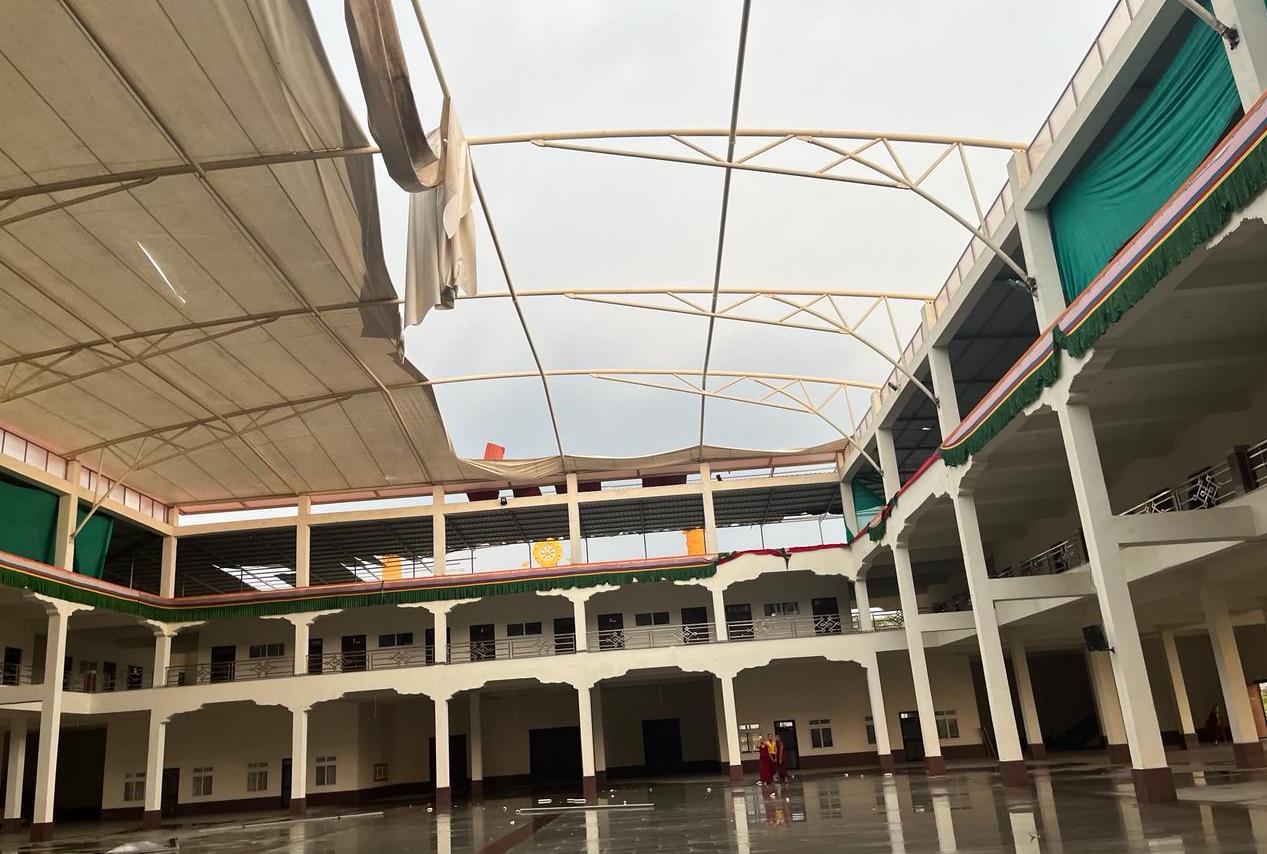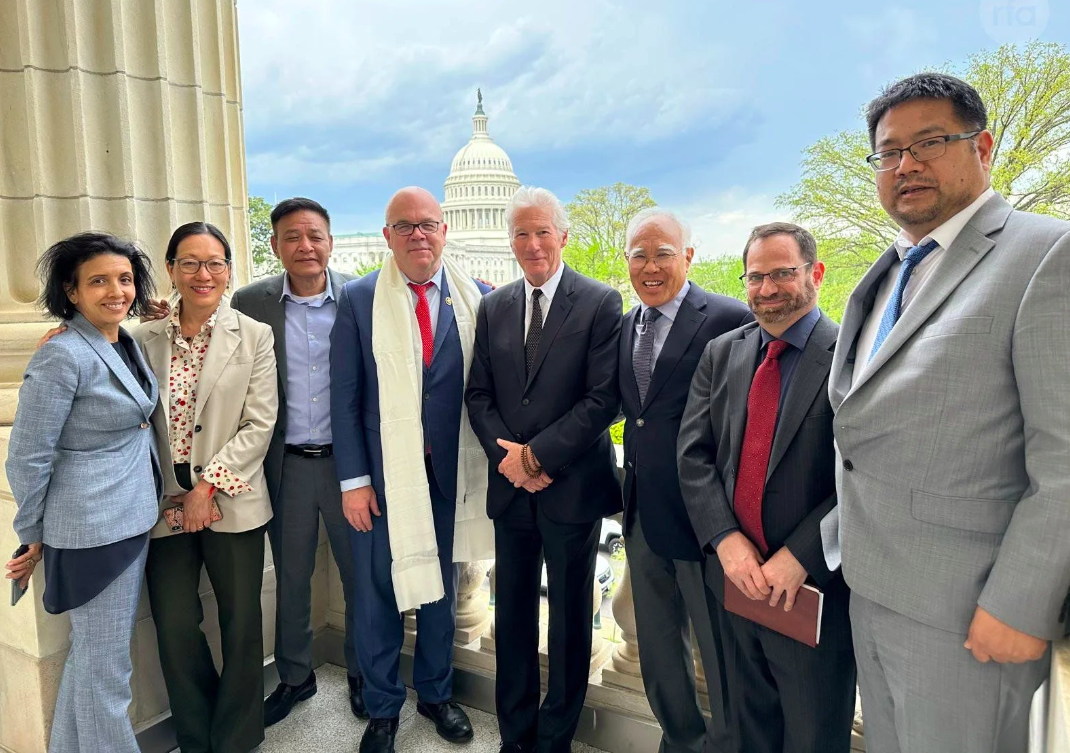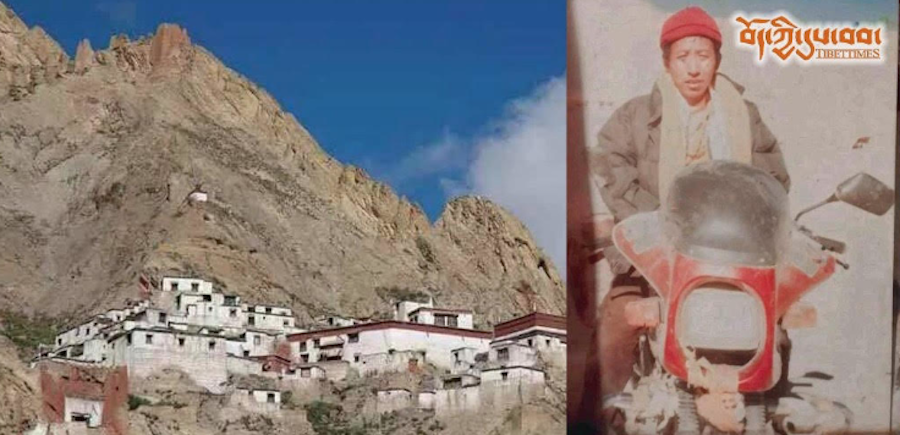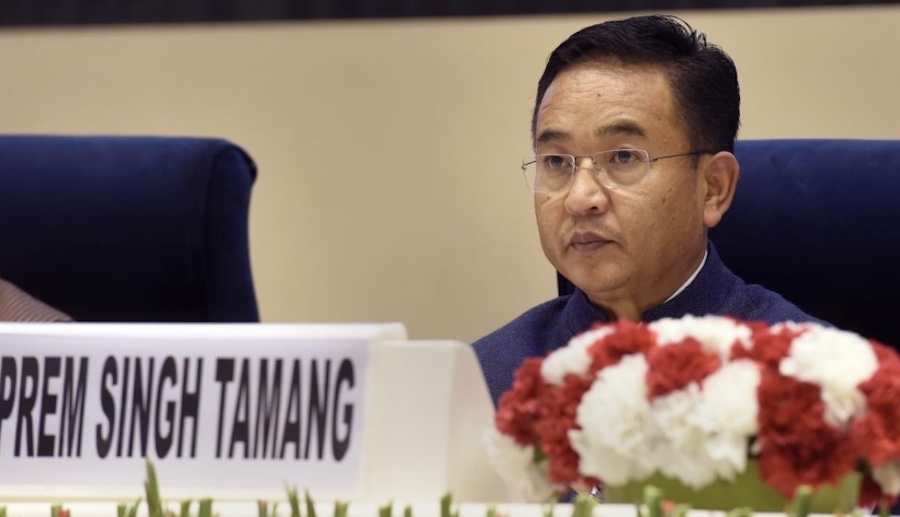 A group of UB (University at Buffalo) students brought the recent Tibetan protests, which have been the largest and most violent protests in the territory in 20 years, close to home this week as they held demonstrations along the Academic Spine and in the Student Union.
A group of UB (University at Buffalo) students brought the recent Tibetan protests, which have been the largest and most violent protests in the territory in 20 years, close to home this week as they held demonstrations along the Academic Spine and in the Student Union.
The students held a poster that kept a death count of Tibetans killed by Chinese troops, wore and displayed Tibet’s flag and wore tape over their mouths to signify the lack of free speech in the Chinese-occupied region. On Thursday, they set up a table with laptops so students could sign online petitions through Students for a Free Tibet’s Web site.
The protests in the Tibetan capital, Lhasa, coincided with the annual commemoration of the failed uprising against the Chinese on March 10, 1959, which forced the country’s spiritual leader, the Dalai Lama, into exile.
The recent string of protests began with a group of monks that held a peaceful march through the capital. Days later, the peaceful protest turned violent on both sides.
The Chinese reported that 16 people have been killed, according to The Times, a British newspaper.
A junior Asian studies major at UB, who is in direct contact with people in Tibet, said reports indicate that there is a confirmed 134 Tibetan deaths and an estimated 300 or more unconfirmed. The student requested to remain anonymous to protect the identities of her sources since it is believed that phone lines are tapped.
The monks marched to demand independence and the release of several political prisoners that were arrested during a celebration of the Dalai Lama receiving a Congressional medal from the United States.
“Police blocked off their path as well as attacked them in the street. The people of Lhasa were of course very distressed by the violence being used against the peaceful protestors and started protesting themselves. At the peak, some 20 to 25 thousand people in the capital city were protesting,” said the Tibetan-speaking student, who returned from Tibet two months ago.
While some students at UB with Tibetan ancestry see the violence as a spontaneous explosion as the result of many years of pent up suffering, some international students from China see the riots as organized terrorist plots.
The Chinese government blames the Dalai Lama. The Dalai Lama has stated that if violence on the Tibetans’ part does not stop, he would resign.
His Holiness has advocated a “middle way” to resolve the conflict. Rather than asking for full independence, the Dalai Lama asks for autonomy.
 To the Chinese government and all four Chinese students interviewed, Tibet is and always has been a part of China, and to ask for autonomy is to want separation, which is in conflict with Chinese culture and traditions.
To the Chinese government and all four Chinese students interviewed, Tibet is and always has been a part of China, and to ask for autonomy is to want separation, which is in conflict with Chinese culture and traditions.
“In China’s culture and tradition, the concept of union is emphasized. We want the whole country together,” said Chinese Students and Scholars Association (CSSA) President Ying Zhang.
“I don’t feel good about it if a small group of people are trying to separate us,” said CSSA member Heuina Xu, a graduate student in electrical engineering, adding that she sees China as a big family of many ethnic groups.
Simultaneously, Tibetan students feel that the Chinese are forcing their culture on those currently living in the region.
“Our culture will be deluded, and eventually it will be extinct from this world. That’s what they want,” said Tibetan Student Association President Kunchok Youdon.
Propaganda makes it almost impossible to find the truth to the situation.
“China always uses propaganda on these issues,” the student said. “The fact of the matter is if you look at what the Chinese government is saying…we have undeniable evidence against it with photographs of bodies. If the Chinese didn’t use lethal force, how did those men end up with bullets in their chests?”
Chinese students feel strongly that there is much propaganda on the Tibetan side, along with the western media.
“Every government will impose some regulations on protestors. People are doing that everywhere, so why pick on China?” asked Zeyuan Li, a graduate student in economics and member of CSSA. “It’s purely propaganda.”
Li and Zhang pointed out several photos published on CNN, Fox and BBC News Web sites that either cut out an important part of the scene to skew the public’s interpretation of the picture, or misled audiences with photo captions.
Materials presented by the Chinese students, found on a Chinese language forum, differed from the content on western online media Web sites.
While the Chinese material presented captions with misinformation, such as labeling Nepali police as Chinese police, and insinuating that protestors were being loaded into a military vehicle when an ambulance was actually pictured, the captions on the sites were true to fact when viewed on Thursday night.
The pro-Tibetan Asian studies major also thinks the situation is misrepresented by the media.
“The media unfortunately represents this as an ethnic conflict, but it is not…it’s a political conflict about national unity,” the student said.
UB student sheds light on the protests in the midst of a media blackout
The junior Asian studies major at UB is in direct contact with civilians in Tibet, and has been receiving reports throughout the week despite the media blackout the Chinese have imposed on Tibet.
“Unfortunately, confirmation is almost impossible. Power lines and phone lines have been cut,” the student said, adding that only one journalist is left in Lhasa.
Tibetan SA President, Kunchok Youdon and the student believe the Chinese are trying to remove all journalists and tourists from the country so that nobody can witness what they will do next.
“Tibetans are pretty sure the Chinese are trying to get rid of witnesses before the real crackdown begins,” the student said. “It’s shocking to us that right now, with the entire world and media watching, China is gunning down Tibetans in the streets.”
To Youdon, China’s hesitancy to allow international media into the country is a signal that they don’t want the world to see what they do to Tibetans.
“From the Chinese perspective, they don’t allow international media in Tibet, so that clearly shows that they’re scared about what they’re doing in Tibet,” Youdon said.
The UB student has received several reports from her sources that exhibit the Chinese response to the protests.
“The most disturbing report that we’ve had so far said that a truck pulled into a prison…with 26 people and immediately upon unloading, they were shot,” the student said.
Tibetans have also told the student that the Chinese police are conducting door-to-door searches for anyone they suspect played a role or participated in the protests. China has also issued a wanted list of 17 Tibetans, including monks and a woman, according to The Times, a British newspaper.
“Police are coming into homes in Lhasa at night and taking away politically suspect people,” the student said.
The few Tibetan police officers in the country are not taking part in this crackdown.
“Most police officers are ethnically Chinese. In fact, in one region of Tibet where police officers are mostly ethnically Tibetan, the police have refused to arrest protestors,” the Asian studies major said.
Reports have also indicated that young people are involved in the protests.
“Forty middle school students in northeastern Tibet staged a demonstration…and were severely beaten and dragged off to police vehicles, and right now 700 middle school students are protesting outside of the police station,” the student said.
Although many Tibetans have been wounded or injured during the protests, one government-run hospital closed its doors to Tibetans. The student also received a report that many people who were still in critical condition voluntarily left another hospital for unknown reasons.
“Tibetans that have been harmed by the shootings are being rejected from the public, government-run hospital,” the student said. “They’re afraid they’ll be killed in the hospital or the government will find out who’s there.”
The demonstrators believe that this issue is very immediate and needs to be brought to the attention of students, the local community and local politicians.
“This is one of the world’s most major human rights violations occurring today,” the junior Asian studies major said. “We have a huge student body here and the students are the ones who tend to lead activism.”





